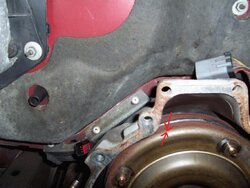2000StreetRod
Moderator Emeritus
- Joined
- May 26, 2009
- Messages
- 10,597
- Reaction score
- 334
- City, State
- Greenville, SC
- Year, Model & Trim Level
- 00 Sport FI, 03 Ltd V8
Your old pump
Don, As I recall you have about 75,000 miles on that oil pump and it is in good condition. I was planning on installing a new pump when I do the bearings, rings and head work in a year or two. Thanks for the offer! I'll keep it in mind.
Dale, would you like to change that oil pump? I did mine because of the work to get down to the balance shaft. I had never driven my truck, it was wrecked, so I only started it once to listen to it for a few minutes. The pump was $90 then from Ford, and I didn't have anything in the pans. I did it back then because of the lack of knowledge about these issues, for insurance.
Don, As I recall you have about 75,000 miles on that oil pump and it is in good condition. I was planning on installing a new pump when I do the bearings, rings and head work in a year or two. Thanks for the offer! I'll keep it in mind.














